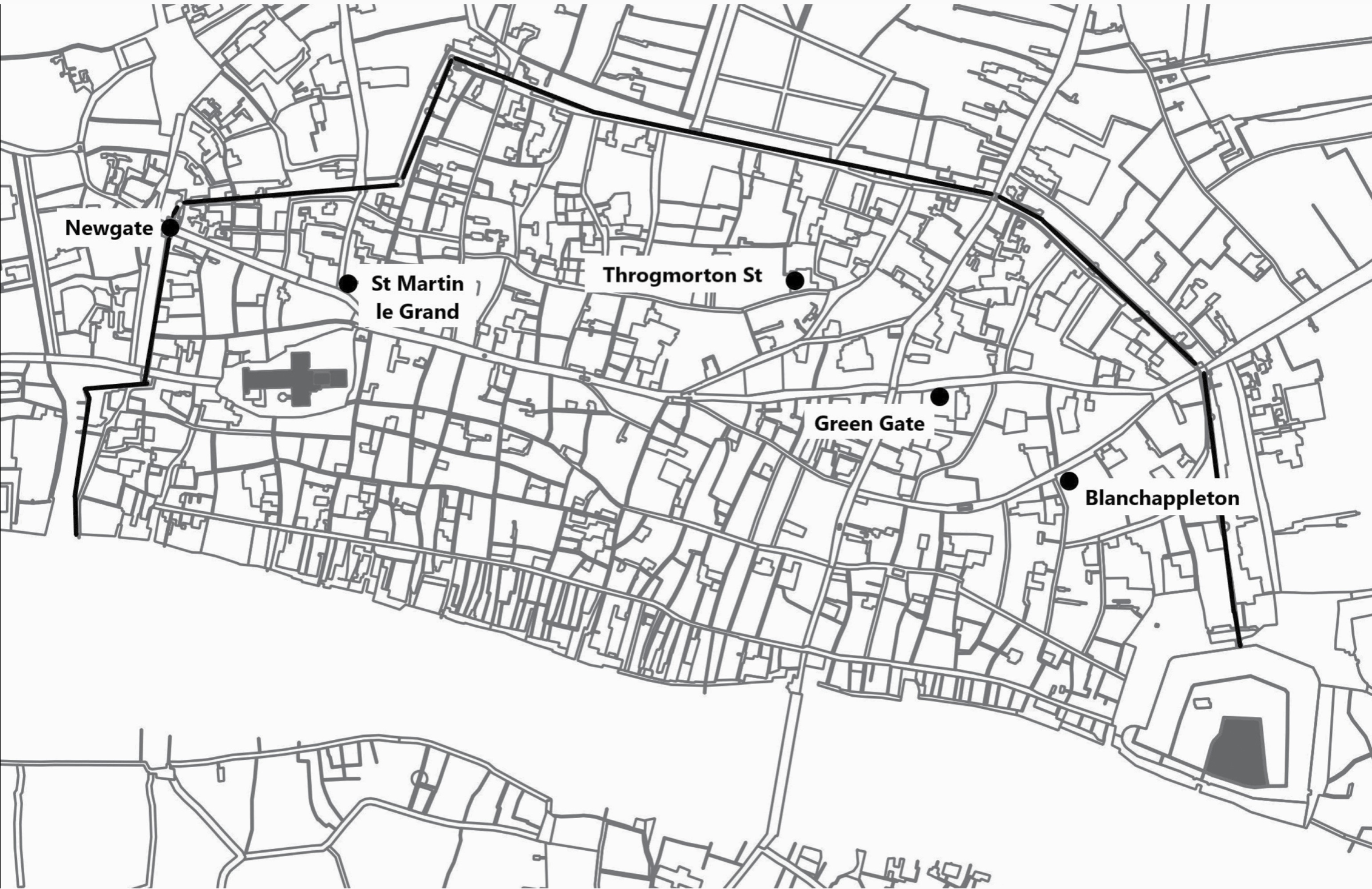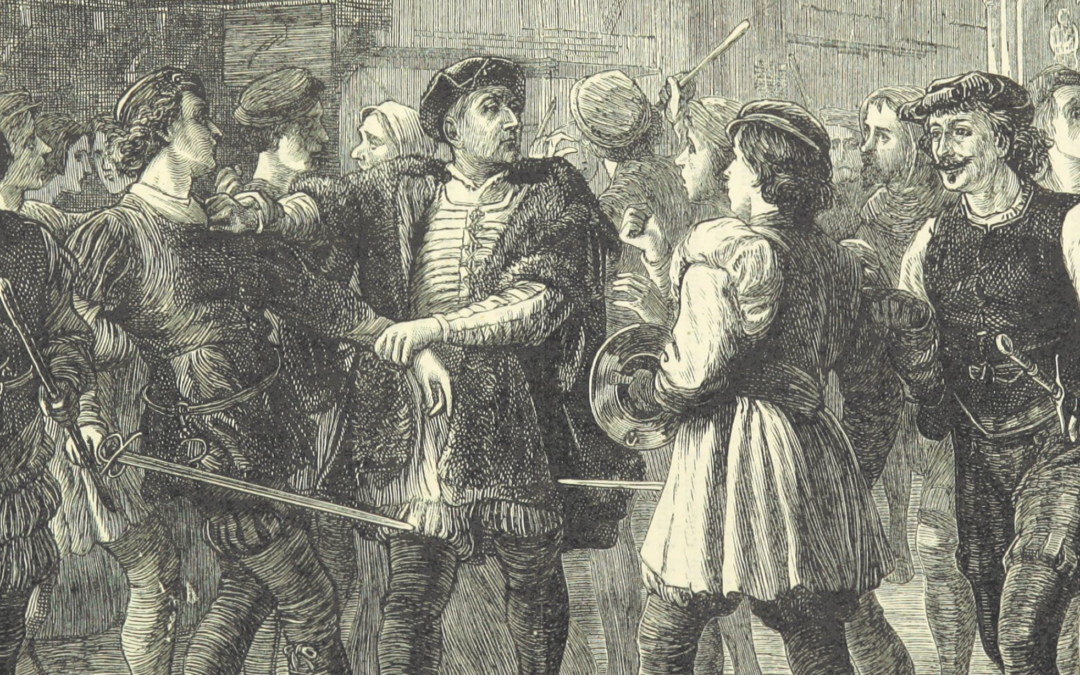Brodie Waddell’s latest article The Evil May Day riot of 1517 and the popular politics of anti-immigrant hostility in early modern London is published in the latest issue of Historical Research. Here Brodie explains the development of that research.
In the Spring of 2014, it felt like a wave of anti-immigrant hostility was sweeping through England. In the European Union elections of May that year, the UK Independence Party won more seats than Labour and the Conservatives combined. The British press was running ever-more stories on migrants, many of them focused on the supposed dangers of ‘mass immigration’ (https://migrationobservatory.ox.ac.uk/resources/reports/decade-immigration-british-press/). As it turned out, this was merely a foretaste of the torrent of xenophobia that came with the Brexit Referendum in 2016, but we didn’t know that then.
Meanwhile, I was a junior lecturer scrabbling around for a good idea for a conference paper, as Koji Yamamoto had invited me to speak at an event he had organised on ‘Stereotypes in Early Modern Britain’ in June. Moreover, I was also an immigrant. As a white, anglophone Canadian, I was hardly the main target of Nigel Farage or the Daily Mail, but nonetheless I was probably more aware of my ‘foreignness’ that Spring than I had been since my arrival in the UK almost a decade earlier. Although as a historian I had long been interested in how notions of ‘Englishness’ influenced economic life in the early modern period, I think it was only because of my own status as an immigrant at that particular moment that I decided to focus on perhaps London’s most famous explosion of anti-immigrant hostility: Evil May Day.
On the eve of the customary May Day festivities in 1517, after months of growing tensions, a huge crowd of Londoners assembled at St Paul’s churchyard and marched through the streets of the city, attacking the homes and workshops of immigrants. Their hostility was directed at many different sorts of foreigners: wealthy merchants as well as ordinary craftsmen, whether French, Italian or Flemish. What they had in common was their apparent privilege – each of these threatening ‘aliens’ was thought to enjoy the protection or favour of Henry VIII and his government.
The paper that I wrote for the conference that June was rushed and sloppy, but I believe its core argument was sound, and over the subsequent five years I gradually revised and expanded it into my new article in Historical Research. This further research gave me a chance to track more precisely how this played out on the ground in 1517.
This anger about immigrants’ privilege can be seen in the rhetoric ahead of the riot, but it is also visible in the specific sites and people attacked by the crowd. When we look at the events of that night closely the pattern becomes clear. They began by breaking open Newgate Prison and releasing ‘diverse younge men of the citie [who had] assaulted the Alyens as they passed by the stretes’. Then the crowd moved to the Liberty of St. Martin le Grand, a ‘sanctuary’ district that many immigrants made home, where they ‘lefte fewe house unspoyled’. Their next target was Green Gate, the house of Henry VII’s French secretary, which reportedly sheltered pickpockets and unlawful wool workers. The angry Londoners also attacked Blanchappleton, a block that had previously been formally outside the jurisdiction of the City and which continued to hold large numbers of alien shoemakers, where they ‘threwe shooes and bootes into the strete’. Finally, the homes of some Italian merchants with close connections to the king and the residence of the Spanish ambassador were another target for the rioters.

 The sites targeted during the riot in 1517. The base map was extracted from W. Faithorne and R. Newcourt, An Exact Delineation of the Cities of London and Westminster (London, 1658) for ‘Layers of London’ (2021), supported by The National Lottery Heritage Fund, licensed under CC BY 4.0. I am grateful to Matthew Davies for providing it.]
The sites targeted during the riot in 1517. The base map was extracted from W. Faithorne and R. Newcourt, An Exact Delineation of the Cities of London and Westminster (London, 1658) for ‘Layers of London’ (2021), supported by The National Lottery Heritage Fund, licensed under CC BY 4.0. I am grateful to Matthew Davies for providing it.]
The topography of violence that fateful night shows the underlying ‘political’ aims of these Londoners. This was not simply an act of mindless hatred, though fear and prejudice were certainly part of it. At its heart, the riot was driven by a xenophobic hostility to the official support and royal protection that these immigrants apparently benefitted from. In the minds of their adversaries, both rich Italian traders and poor Flemish shoemakers seemed to have been given rights and privileges that ‘native’ Londoners lacked.
While the riot of 1517 ended with mass arrests and a series of brutal executions, this form of anti-immigrant hostility did not disappear. As I show in the new article, many immigrant groups in London continued to face suspicion that they were both a threat to the economic interests of English households and a beneficiaries of state support. For example, this perception sparked complaints and smaller riots against the Huguenots during Elizabeth’s reign and then again in the 1670s and 80s. The Scots who arrived in London with James VI when he inherited the English crown provoked similar accusations and occasional violent clashes. After the Glorious Revolution gave England a Dutch ruler, it was the turn of the ‘Hollanders’ to face these criticisms, a sentiment that was fanned further by seditious Jacobite publications decrying immigrants for undermining the Englishman’s liberties and his country’s prosperity.
Unfortunately, five centuries after Evil May Day it was still very easy to see the same model of xenophobic popular politics shaping British public life when I was writing this article in the 2010s. Nationalist commentators such as Farage constantly sought to tie ‘the political elites’ in Westminster and Brussels to the ordinary EU migrants – such as Polish plumbers and Romanian cleaners – who voters regularly encountered in daily life. While we might be tempted to be thankful that the result was not an outburst of riotous violence comparable to the events of 1517, the impact on British society has been no less consequential.
Featured image: George Thornbury, Old and New London (London, [1887]–93]), British Library Digital Collections https://creativecommons.org/publicdomain/mark/1.0/


